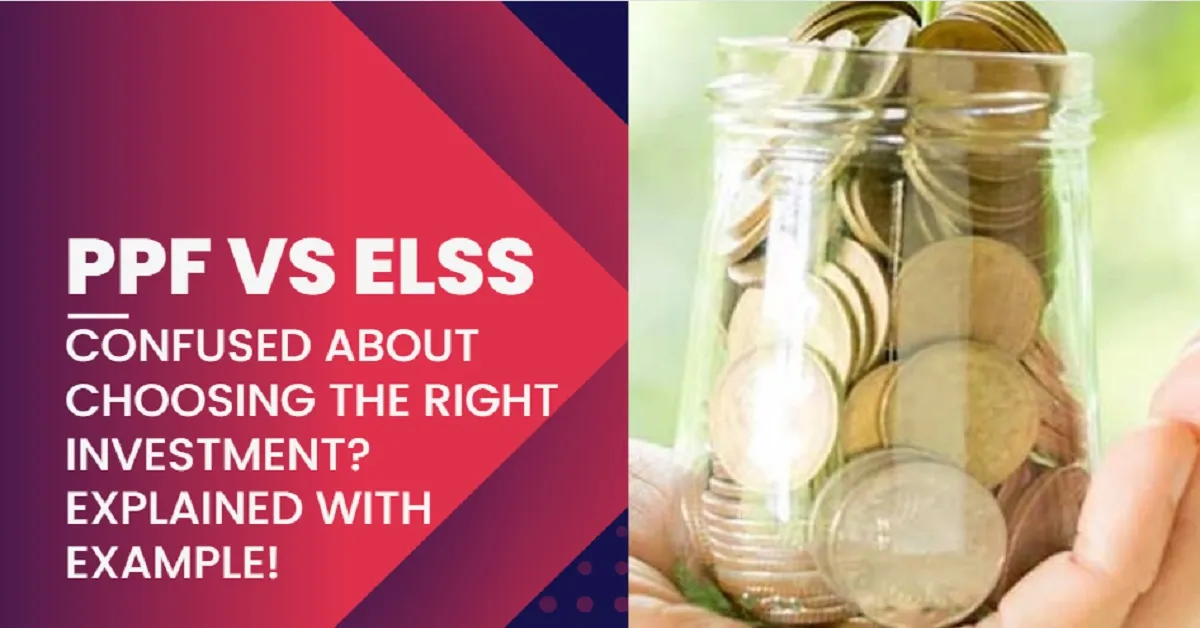Introduction
When it comes to choosing the right investment avenue, the decision between Public Provident Fund (PPF) and Equity-Linked Savings Scheme (ELSS) can be confusing. Both offer unique benefits and cater to different investment goals. In this article, we will delve into the dissimilarities between PPF and ELSS, helping you make an informed investment decision.
What is PPF?
PPF, short for Public Provident Fund, is a government-regulated investment plan known for its long-term safety. It offers a secure and reliable way to grow your wealth over time.
-
Investment Options and Limits:
- The minimum investment amount is Rs. 500, while the maximum allowed per financial year is Rs. 1.5 lakh.
- You can open a PPF account at any post office or authorized nationalized bank branches.
-
Maturity Period:
- PPF accounts have a maturity period of 15 years.
- After 15 years, the account can be extended with or without additional contributions.
-
Partial Withdrawals:
- Partial withdrawals from a PPF account are allowed after 5 years of opening the account.
-
Interest Rate:
- As of December 2022, the current interest rate on PPF is 7.1%.
- The interest becomes payable if the deposit is made before the fifth of the month.
-
Tax Benefits:
- Contributions made towards a PPF account are eligible for tax deductions under section 80C of the Income Tax Act, 1961.
- The accumulated amount and interest are exempt from tax at the time of withdrawal, falling under the EEE (Exempt-Exempt-Exempt) status.
-
Loan Facility:
- PPF account holders can avail a loan against their account after the second year.
What is ELSS?
ELSS, or Equity-Linked Savings Scheme, is a type of mutual fund that offers tax benefits under section 80C of the Income Tax Act, 1961. By investing in ELSS funds, investors can enjoy tax rebates while potentially earning substantial returns.
-
Tax Deductions:
- ELSS funds provide tax deductions of up to Rs. 1,50,000 per year under section 80C.
-
Capital Gains Tax:
- Long-term capital gains of up to Rs. 1,00,000 per year from ELSS funds are tax-free.
- Gains above this limit attract a long-term capital gains tax of 10%, along with applicable cess and surcharge.
-
Lock-in Period:
- ELSS funds come with a mandatory lock-in period of three years, meaning you cannot withdraw your investment before this period.
-
Minimum Investment:
- There is no specific upper limit for investment in ELSS funds, but the minimum investable amount may vary across different fund houses.
-
Potential Returns:
- ELSS funds have the potential to deliver returns that can beat inflation, making them an attractive option for long-term wealth accumulation.
PPF vs ELSS: Let’s Understand Differences
| PPF | ELSS | |
| Interest Rates | Currently 7.1% 2012-2013 – 8.8% 2019-2020 – 8% April 2020 till date – 7.1% |
14%-16% on an average in long term. Can go as high as 17-18% |
| Interest Calculated | Calculated monthly. Paid at the end of financial year. Compounding is yearly 7.1% since it is paid on year end |
Calculated Daily. Paid daily. 14% CAGR mean; compounding Annually |
| Lock-in | 15 years. Partial withdrawal 50% after 5 years. Full withdrawal on completion of 15 financial years |
3 years lock-in on eyery SIP installment |
| Exit Load | No Exit Load | No Exit load due to lock-in |
| Expenses | No Expenses | Expense Ratio applied |
| Tax Benefits | Yes, in 80C up to 1.5 Lakhs | Yes, in 80C up to 1.5 Lakhs |
| Taxes | No Tax on withdrawal | LTCG of 10% on withdrawal. Only on capital gain. |
Now Let’s Understand Differences With Example
| PPF | ELSS |
| Monthly Investment: Rs 10,000 | Monthly Investment: Rs 10,000 |
| Current Interest Rate: 7.1% Calculator Link |
Considering average of 14% Calculator Link |
| Total Investment after 15 Years: Rs 18,00,000 | Total Investment after 15 Years: Rs 18,00,000 |
| Final Value: Rs 32,54,567 | Final Value: Rs 61,28,538 |
| Capital Gain: 32,54,567 – 18,00,000 = Rs 14,54,567 | Capital Gain: 61,28,538 – 18,00,000 = 43,28,538 LTCG Tax = 10% of 43,28,538 – 1,00,000 = 42,28,538 (Tax on amout above 1 Lakh) LTCG Tax = 10% of 42,28,538 = 4,22,853 |
| Tax: Rs 0 | Tax: Rs 4,22,853 |
| Take Home: Rs 32,54,567 | Take Home = 61,28,538 – 4,22,853 = Rs 57,05,685 |
We have shown you comparison between PPF and ELSS mutual fund which may let you easily decide the right investment for you. Hope It will clear you confusion.
Please let’s know your views by commenting below.




